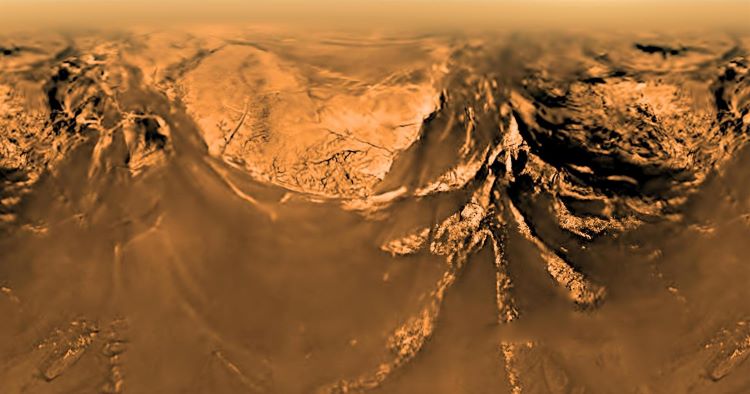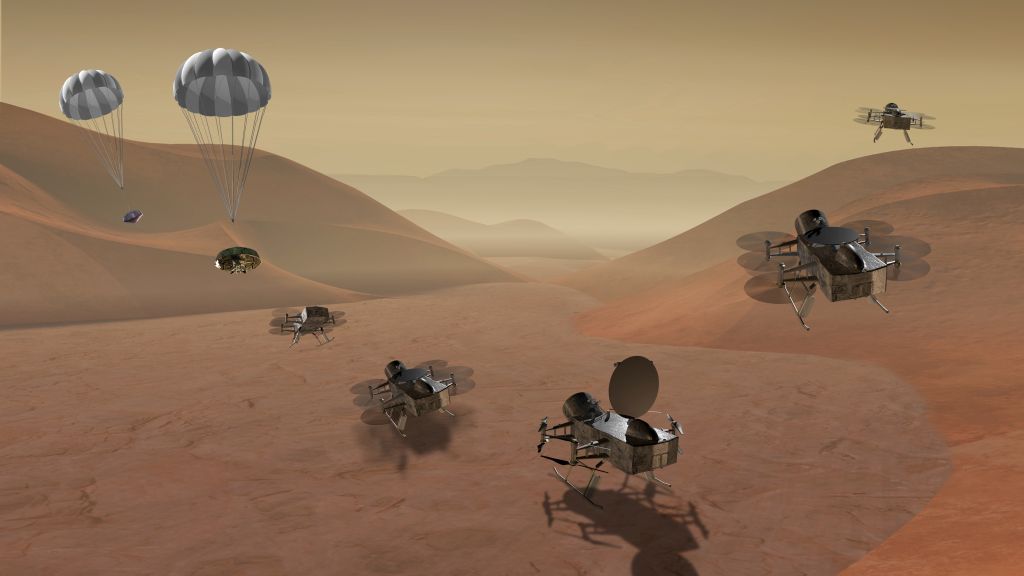I really can’t believe that the Ingenuity helicopter on Mars took its maiden voyage in April 2021. On the 16th April 2024, engineers at NASA have received the final batch of data from the craft which marks the final task of the team. Ingenuity’s work is not over though as it will remain on the surface collecting data. For the engineers at NASA, they have their sights set on Dragonfly, a new helicopter destined for Titan.
Continue reading “The Ingenuity Team Downloads the Final Data from the Mars Helicopter. The Mission is Over”Titan Probably Doesn’t Have the Amino Acids Needed for Life to Emerge

Does Saturn’s largest moon, Titan, possess the necessary ingredients for life to exist? This is what a recent study published in Astrobiology hopes to address as a team of international researchers led by Western University investigated if Titan, with its lakes of liquid methane and ethane, could possess the necessary organic materials, such as amino acids, that could be used to produce life on the small moon. This study holds the potential to help researchers and the public better understand the geochemical and biological processes necessary for life to emerge throughout the cosmos.
Continue reading “Titan Probably Doesn’t Have the Amino Acids Needed for Life to Emerge”How Did Life Get Started on Earth? Atmospheric Haze Might Have Been the Key

A recent study accepted to The Planetary Science Journal investigates how the organic hazes that existed on Earth between the planet’s initial formation and 500 million years afterwards, also known as Hadean geologic eon, could have contained the necessary building blocks for life, including nucleobases and amino acids. This study holds the potential to not only help scientists better understand the conditions on an early Earth, but also if these same conditions on Saturn’s largest moon, Titan, could produce the building blocks of life, as well.
Continue reading “How Did Life Get Started on Earth? Atmospheric Haze Might Have Been the Key”Should We Send Humans to Titan?
Universe Today recently examined the potential for sending humans to Jupiter’s icy moon, Europa, and the planet Venus, both despite their respective harsh surface environments. While human missions to these exceptional worlds could be possible in the future, what about farther out in the solar system to a world with much less harsh surface conditions, although still inhospitable for human life? Here, we will investigate whether Saturn’s largest moon, Titan, could be a feasible location for sending humans sometime in the future. Titan lacks the searing temperatures and crushing pressures of Venus along with the harsh radiation experienced on Europa. So, should we send humans to Titan?
Continue reading “Should We Send Humans to Titan?”Titan Dragonfly is Go!…. for Phase C

The surface exploration of Saturn’s largest moon, Titan, just got one step closer to reality as NASA’s much-anticipated Dragonfly mission recently received approval from the powers that be to advance to Phase C, which is designated as Final Design and Fabrication, according to NASA’s Systems Engineering Handbook. This comes after the Dragonfly team successfully completed all the requirements for Phase B in March 2023, also known as the Preliminary Design Review or Preliminary Design and Technology Completion in the NASA Systems Engineering Handbook.
Continue reading “Titan Dragonfly is Go!…. for Phase C”If Titan Has the Chemistry For Life, Dragonfly Could Find it

The highly-anticipated Dragonfly robotic rotocraft mission to Saturn’s moon Titan is scheduled to launch in 2027. When it arrives in the mid-2030s, it will hover and zoom around in the thick atmosphere of Titan, sampling the air and imaging the landscape. What could be more exciting than that!?
Well, actually … there’s more: Dragonfly will also be equipped with a mass spectrometer that will help it search for the chemistry of life in this alien world. Astrobiologists want to know if Titan has the same type of chemistry on its surface that Earth did in its early history, which could have helped give rise to life on our planet.
Continue reading “If Titan Has the Chemistry For Life, Dragonfly Could Find it”Weekly Space Hangout: November 18, 2020 – Dr. Ralph Lorenz, Planetary Scientist and Dragonfly Mission Architect
This week we are airing Fraser’s pre-recorded interview with Dr. Ralph Lorenz, planetary scientist and aerospace engineer from the Johns Hopkins Applied Physics Laboratory. Ralph is the Mission Architect of the upcoming Dragonfly Mission to Titan, and the author of the new book, Saturn’s Moon Titan Owners’ Workshop Manual.
Continue reading “Weekly Space Hangout: November 18, 2020 – Dr. Ralph Lorenz, Planetary Scientist and Dragonfly Mission Architect”How Habitable is Titan? NASA is Sending the Titan Dragonfly Helicopter to Find Out

There are few places in the Solar System which are as fascinating as Saturn’s moon Titan. It’s a world with a thicker atmosphere than Earth. Where it’s so cold that it rains ammonia, forming lakes, rivers and seas. Where water ice forms mountains.
Like Europa and Encleadus, Titan could have an interior ocean of liquid water too, a place where there might be life.
Continue reading “How Habitable is Titan? NASA is Sending the Titan Dragonfly Helicopter to Find Out”

